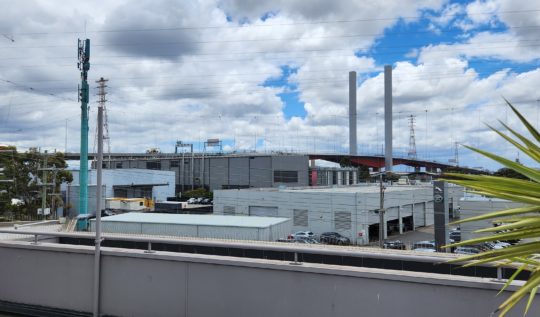Understanding the difference between Redraw vs Offset accounts in Property Investment
The arena of property investment is filled with intricate mechanisms, two of which are redraws and offsets. These financial tools, related to mortgage loans, can often be a source of confusion. To shed light on this topic, we delve into the essentials of these mechanisms and their potential impacts on tax deductions, particularly for property investments. Let’s look at unpacking the complexities of these financial instruments, highlighting the different circumstances where each could be beneficial, as well as how they can impact tax deductions and property ownership strategy.
The Basics of Redraws and Offsets
A redraw facility and an offset account are two financial tools typically offered with mortgage products. Both help to reduce interest payments but work differently. A redraw facility allows borrowers to make additional repayments to their loan, which they can withdraw (or ‘redraw’) if needed. An offset account, on the other hand, is a bank account linked to a home loan. The balance of this account is ‘offset’ against the loan, reducing the interest charged.
In essence, both tools reduce the interest you pay. However, while they might seem similar, they serve distinct purposes and are designed for different investment strategies.
What is a Redraw?
A redraw facility allows you to pay more than your minimum home loan repayment on a fortnightly or monthly basis. These surplus funds can be retrieved, or “redrawn,” to cover needs like renovations or unforeseen expenses. The money in your redraw facility works against your home loan balance, subsequently reducing the interest you have to pay. This facility essentially acts as a reservoir of your additional repayments, which are added to your home loan balance. However, it’s important to note that these extra funds will decrease as you continue making regular repayments.
What is an Offset?
On the flip side, an offset account is an independent transaction account tied to your home loan. It functions like your regular bank account, giving you the freedom to deposit and withdraw money as needed, while also potentially cutting down the interest payable on your home loan.
The sum in your offset account is ‘offset’ against your home loan balance, which means that you only pay interest on the difference between your home loan balance and your offset account balance. As the interest is determined daily and billed monthly, maintaining more money in your offset can lead to less interest paid. However, it’s also true that as your offset balance fluctuates, the extent to which it can reduce your home loan interest will also vary.
Both options – or even a combination of the two – can save you paying interest and even help you pay off your home loan faster.
The main differences between redraw and offset
The primary distinction between an offset account and a redraw facility lies in the manner in which the funds are managed. With an offset account, the funds are held in a separate transaction account that’s linked to your home loan, and these funds aren’t reduced by regular repayments as they are with a redraw facility. A redraw facility lets you make additional repayments to your home loan account and withdraw them later if necessary. Here’s a simplified comparison of their key features:
Redraw Facility vs Offset Account:
• A redraw facility’s balance is constituted by the extra repayments you’ve made, while an offset account operates just like a standard bank account where you can choose to receive your salary or any regular payments.
• Extra repayments in a redraw facility lessen the interest on your home loan. On the other hand, money in an offset account offsets the home loan balance, thus reducing the interest charged.
• Funds in a redraw facility are accessible by transferring to your transaction account, while an offset account allows immediate access to your everyday funds. You can pay bills, clear credit card debt, withdraw cash at ATMs, or use a debit card.
• A redraw facility is a common feature in many home loan options. If not set up during the loan application, you’ll need to establish it. Conversely, an offset account is available only with certain home loans.
• To increase the balance in your redraw facility, you can manually make extra repayments through direct debit. To leverage your income for reducing interest, you can deposit your salary into an offset account.
• A redraw facility restricts access to your funds, which can be beneficial if you’re saving for a specific goal, like home renovations. In contrast, an offset account offers unlimited access to your funds.
How does a redraw and offset reduce home loan interest?
Both offset accounts and redraw facilities offer the benefit of reducing the interest and repayments on your home loan. They achieve this by diminishing the portion of your home loan balance on which interest is calculated.
By making surplus repayments to your home loan account or depositing extra funds into an offset account, you reduce the remaining balance that your bank uses to determine interest on your home loan. Typically, the interest on your remaining home loan balance is computed daily and billed monthly. This implies that even a single day of having additional funds in either an offset account or redraw facility can lead to savings on interest charges.
The decision between a redraw facility and an offset account isn’t so much a matter of one being superior to the other, but rather about which option best aligns with your personal financial circumstances. Furthermore, the type of loan you have also plays a role in this decision, as offset accounts are not offered with all home loans, while redraw facilities are more universally available, as long as you activate them.
If you frequently make payments that exceed the minimum required for your home loan, and occasionally have substantial sums to deposit, then a redraw facility may be the right choice for you. This feature allows you to access additional funds whenever you need to, but keep in mind that withdrawing these funds will decrease the benefit of reduced interest on your home loan.
Conversely, if you require immediate access to your funds and the convenience of managing your salary and bill payments from a single account, then an offset account might be a more suitable choice. However, it’s important to note that home loans that include an offset account might come with slightly higher interest rates and fees.
The Implications of Redraws and Offsets on Tax Deductions
Let us look at implications of redraws and offsets on tax deductions through the story of two brothers, John and Frank.
Frank has bought his forever home and aims to pay off his loan quickly, with potential plans to invest in the future. In Frank’s case, a redraw is beneficial. If he redraws any funds to put down a deposit on an investment property, that redraw will be tax-deductible against the investment property.
John, on the other hand, bought an apartment intending to upgrade to a family home later and turn the apartment into an investment property. For John, an offset account would be ideal. If he pays his loan down and then redraws the balance, only the balance he got it down to is tax-deductible when he moves out. Conversely, if he builds up an offset account and takes that with him to his forever home, he gets a full deduction on his loan when he moves out of the apartment and it becomes an investment.
Utilising your offset account won’t impact the tax deductibility of the interest incurred on your loan. However, when using a redraw facility, you might not be eligible to claim deductions for money withdrawn for purposes such as buying a new car or going on a holiday. For any uncertainties, consider consulting the Australian Tax Office or reach out to your personal accountant to understand the specifics of your tax situation.
How to Choose Between Redraws and Offsets
Your choice between redraws and offsets should be aligned with your property investment strategy. If your goal is to pay off one property as quickly as possible, a redraw facility might be the best option. However, if you plan to invest in more properties in the future, an offset account can protect the future tax deductions of a loan. Especially if you are seeking to refinance a property to release equity.
The key point to understand the implications of each tool and align them with your property investment plans. While these strategies won’t radically change your life, they are the small, 1% moves that can make a significant difference in your journey to becoming a successful property investor.
The Importance of Professional Financial Advice
Understanding the intricacies of redraws and offsets can be complex. It is crucial to seek professional financial advice before making any decisions. Ensure that your advisor doesn’t give you generic answers and can thoroughly explain these concepts in the context of your personal financial situation. It is a good idea to speak with an investment savvy mortgage broker to tailor your loans towards your goals.
In conclusion, both redraws and offsets are useful tools in property investment. However, their benefits depend on your personal circumstances and financial goals. Understanding these tools and how to leverage them can make a significant difference in your property investing journey. As always, it is recommended to consult with a professional to make informed decisions.
Remember, this is not financial advice, and everyone’s situation is unique. So please, seek professional financial advice before making any decisions based on this information.





